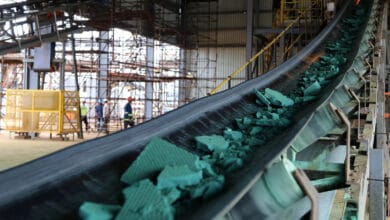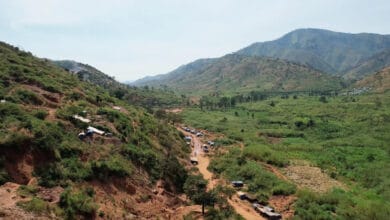Madison Metals announces two new uranium anomalies and provides exploration update on EPL-7011, Namibia

Madison Metals is pleased to announce the delineation of two new uranium anomalies at its Rössing North Uranium Project in Namibia, one of the world’s top uranium-producing countries. Additionally, Madison is making ongoing exploration progress on its Exclusive Prospecting License 7011 (“EPL-7011”), a major untested anomaly adjacent to the Rössing Uranium Mine in the renowned Erongo uranium province of Namibia.
“These very encouraging results have confirmed the expected high potential of EPL-7011,” said Duane Parnham, Executive Chairman and CEO of Madison Metals. “Our team expects to plan drilling of the anomalies to further define the potential for a major uranium deposit on Madison’s Rössing North Project.”
Airborne radiometric data acquired from the Namibian Ministry of Mines and Energy indicated high uranium with low thorium values over Madison’s exclusive licence area. Exploration activities to date have focused on field validation of the uranium anomalies via a systematic ground radiometric and geological survey. The field validation confirms the presence of uranium anomalous sheeted alaskites intruding the Khan Formation, which is overlain by the Rössing formation.
EPL-7011
In June 2022, the Namibian Ministry of Mines and Energy approved the transfer of EPL-7011 to Pennyworth PTY, which is majority-owned by Madison (85%), with Namibian partners holding 15%. EPL-7011 and EPL-8513, whose transfer is in progress, make up Madison’s Rössing North Uranium Project.

Ground Radiometric and Geological Survey
The survey was conducted over a line spacing of 80 metres (m) and station spacing of 10 m across the airborne radiometric anomalies in the area (Figure 2). The anomaly discovered in the SE portion of the EPL can be split into two: the south-westernmost anomaly and the north-easternmost anomaly (Figure 3). Both anomalies share the same type of lithologies, style of mineralization and structural setting. The lithologies in the area have a general north-east strike and steeply dip towards the south-east. The alaskites occur within isoclinal folding closures close to the Khan-Rössing Formation boundary. The radiometric readings from these alaskites vary from 600 to 6,000 counts per second. The ground radiometric surveying shows that the uranium anomaly has a strike extent of 650 m at the south-westernmost anomaly and 3.4 km at the north-easternmost anomaly.











